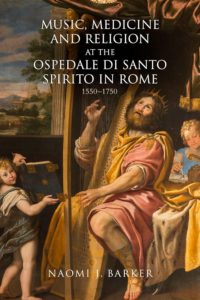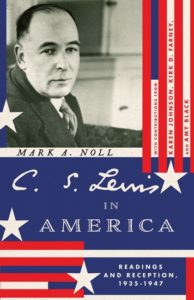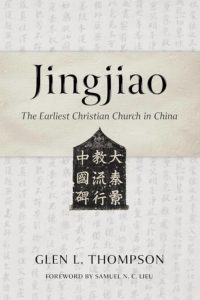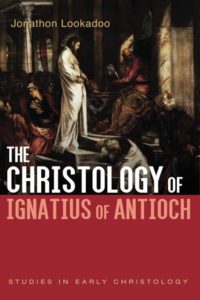Monthly Updates on Recent Books in the History of Christianity
To raise awareness of recent books in the history of Christianity, the editorial staff of Church History: Studies in Christianity and Culture highlights each month a list of 10-15 books in diverse periods and geographical regions that we hope will be of interest to our members. We include here below the 40th monthly list, chosen by our staff, with excerpts from the publishers’ blurbs.

Sarah Apetrei, The Reformation of the Heart: Gender and Radical Theology in the English Revolution. 2024
This book offers a fresh assessment of the relationship between radical theology and gender radicalism in the English Revolution. In doing so, it addresses together two themes which have long fascinated historians of the period: the intellectual formation of religious radicalism; and the prominence of women as prophets and preachers in the radical sects. The Reformation of the heart centres on the remarkable ideas and reforming visions of a levelling and highly mystical network in the period of civil conflict, the regicide and its aftermath; a network which linked military chaplains with inspired women and congregations across England. Drawing on both known printed works, and unexamined manuscript evidence, this study suggests that the revolutionary radicals were both more theologically daring, and more unified in their support for women’s participation, than we have thought. On one side, the army chaplains and radical preachers developed a highly original theology of gender, conceiving of a female principle in the Godhead. They were also explicit advocates of women’s preaching, to an extent previously unacknowledged. Concomitantly, this book argues that women’s involvement in preaching and publishing during the crisis fostered innovative thinking on the incarnation; universal salvation; free grace; eschatology; and the nature of the church. The book also offers a contribution to feminist epistemology, showing how the involvement of women in reform and the formation of ideas, as a group with distinctive experiences, priorities, and cultural identities, can be transformative.

A.G. Roeber, Orthodox Christians and the Rights Revolution in America, 2024
From the civil rights movement of the 1950s to the “culture wars” of North America, commentators have identified the partisans bent on pursuing different “rights” claims. When religious identity surfaces as a key determinant in how the pursuit of rights occurs, both “the religious right” and “liberal” believers remain the focus of how each contributes to making rights demands. How Orthodox Christians in North America have navigated the “rights revolution,” however, remains largely unknown. From the disagreements over the rights of the First Peoples of Alaska to arguments about the rights of transgender persons, Orthodox Christians have engaged an anglo-American legal and constitutional rights tradition. But they see rights claims through the lens of an inherited focus on the dignity of the human person.

Naomi Barker, Music, Medicine, and Religion at the Ospedale di Santo Spirito in Rome, 1550-1750, 2024
This book explores connections between the physical care of the sick based on the study of medicine, concepts of healing founded on religious thought, and the practice of music at the Ospedale di Santo Spirito (Hospital of the Holy Spirit) in Rome. The hospital was a unique institution that was regulated by the Roman Catholic Church but simultaneously reflected the significant shifts in scientific thought emerging during the period that coincided with post-Tridentine reforms in the church. The volume discusses the hospital's foundation, architecture and links with the papacy. It also reflects on the then acceptable "ways of knowing" informed by religious concerns and medical traditions. The tripartite relationship between religion, medicine and music within the institution was complex. At times they existed side-by-side, at others they intersected. Drawing on extensive archival research such as financial records, decrees, records of apostolic visits and inventories as well as surviving musical sources (printed and manuscript), the book makes connections between intellectual beliefs about music and actual musical practices. It explores the early use of music as therapy and investigates the musical ideals and practices of the monastic regime which ran the hospital. In a wider sense, the book shows how music operated in the hospital's institutional, social and historical contexts, and how it underwent change over time in response to broader cultural and religious movements.

Massimo Firpo, Catholic Reformation and the Council of Trent: History of Historiographical Myth? Translated by Richard Bates. 2023
What were the salient features of the reaction launched by the Catholic Church in the 16th century in response to the dramatic crisis of the Protestant Reformation? And which historical terms best define it? Scholars have spoken of Catholic Restoration, Catholic Reformation and Counter-Reformation with varying success, often interpreting these concepts as alternatives and at times looking to draw a difficult synthesis between them.
This book examines the historiography of the so-called Catholic Reformation and its aporias, focusing on the stunted and sometimes non-existent application of the decrees issued by the Council of Trent even a century after its end. This, however, did not prevent the creation of a myth of the Tridentine council as the genesis of a profound and widespread religious renewal, even though it encountered more obstacles than support in Rome. It also explains the ongoing validity of the concept of Counter-Reformation, which should be understood as the constant opposition of the Roman curia to any authentic Catholic Reformation.
![]()
Vladimir Ivanovici, Between Statues and Icons: Iconic Persons from Antiquity to the Early Middle Ages. 2023
This book argues that Romans credited certain living persons with the capacity to function as cult statues, that is, as images and vessels of the divine. After addressing the cultural context that produced the idea that humans can become images of the divine, the text shows how emperors, bishops, and others imitated the aesthetic, immobility, and material setting of statuary to establish themselves as iconic and how their role as mediators with the divine was eventually transferred to new categories of material objects, such as relics and icons. The figure of the iconic person thus is shown to have bridged the cult statues of Antiquity with the new mechanisms of interaction with the divine that Christians used for the following millennium. By integrating living persons in the art historical analysis of the spaces and advocating for the need to consider the animation of artefacts together with the reification of bodies, this study marks an important development in the study of the past.

Mark Noll, C.S. Lewis in America: Readings and Reception, 1935-1947. 2023
Perhaps no other literary figure has transformed the American religious landscape in recent history as much as C. S. Lewis. Even before the international publication and incredible success of his fictional works such as The Chronicles of Narnia or apologetic works like Mere Christianity, Lewis was already being read "across the pond" in America. But who exactly was reading his work? And how was he received?
With fresh research and shrewd analysis, this volume by noted historian Mark A. Noll considers the surprising reception of Lewis among Roman Catholic, mainline Protestant, and evangelical readers to see how early readings of the Oxford don shaped his later influence.

Glen L. Thompson, Jingjiao: The Earliest Christian Church in China. 2024
Syriac-speaking Christians brought the gospel along the Silk Road into China in the seventh century. Glen L. Thompson introduces readers to the fascinating history of this early Eastern church, referred to as Jingjiao, or the “Luminous Teaching.” Thompson presents the history of the Persian church’s mission to China with rigor and clarity. While Christianity remained a minority and “foreign” religion in the Middle Kingdom, it nonetheless attracted adherents among indigenous Chinese and received imperial approval during the Tang Dynasty. Though it was later suppressed alongside Buddhism, it resurfaced in China and Mongolia in the twelfth century. Thompson also discusses how the modern unearthing of Chinese Christian texts has stirred controversy over the meaning of Jingjiao to recent missionary efforts in China. In an accessible style, Thompson guides readers through primary sources as well as up-to-date scholarship. As the most recent and balanced survey on the topic available in English, Jingjiao will be an indispensable resource for students of global Christianity and missiology.

Jonathon Lookadoo, The Christology of Ignatius of Antioch. 2023
The letters of Ignatius of Antioch portray Jesus in terms that are both remarkably exalted and shockingly vulnerable. Jesus is identified as God and is the sole physician and teacher who truly reveals the Father. At the same time, Jesus was born of Mary, suffered, and died. Ignatius asserts both claims about Jesus with minimal attempts to reconcile how they can simultaneously be embodied in one person. This book explores the ways in which Ignatius outlines his understanding of Jesus and the effects that these views were to have on both his immediate audience as well as some of his later readers. Ignatius utilizes stories throughout his letters, describes Jesus with designations that are at once traditional and reinvigorated with fresh meaning, and employs a dizzying array of metaphors to depict how Jesus acts. In turn, Ignatius and his audience are to respond in ways befitting their status in Christ because Jesus forms a lens through which to look at the world anew. Such a dynamic Christology was not to cease development in the second century but continued to inspire readers in creative ways through late antiquity and beyond.

Lydia Yaitsky Kertz and Richard K. Emmerson, eds. Dante, Eschatology, and the Christian Tradition: Essays in Honor of Ronald B. Herzman. 2024
Dante, Eschatology, and the Christian Tradition honors Ronald B. Herzman, SUNY Geneseo Distinguished Teaching Professor of English. Over more than fifty years Professor Herzman has been a major force in the promotion of medieval studies within academe and public humanities. This volume of essays by his colleagues, students, and friends celebrates Professor Herzman’s outstanding career and reflects the wide range of his scholarly and pedagogical influence, from biblical and early Christian topics to Dante, Langland, and Shakespeare.

Donald K. McKim and Jim West, Theodore Beza: An Introduction to His Life and Theology. 2023
Theodore Beza (1519-1605) was an important sixteenth-century Protestant Reformer. This volume introduces his life and work and outlines his influential theological thought. McKim and West situate Beza's theology in its historical context and clarify how it was similar to and different from the theology of other Protestant Reformers. They also help readers consider the ongoing relevance of Beza's theology for contemporary Christian living.

Luís Campos Ribeiro, Jesuit Astrology: Prognostication and Science in Early Modern Culture. 2023
Connections between the Society of Jesus and astrology used to appear as unexpected at best. Astrology was never viewed favourably by the Church, especially in early modern times, and since Jesuits were strong defenders of Catholic orthodoxy, most historians assumed that their religious fervour would be matched by an equally strong rejection of astrology. This groundbreaking and compelling study brings to light new Jesuit scientific texts revealing a much more positive, practical, and nuanced attitude. What emerges forcefully is a totally new perspective into early modern Jesuit culture, science, and education, highlighting the element that has been long overlooked: astrology.

Becky Walker, Almsgiving as the Essential Virtue: A Study of the Homilies of John Chrysostom. 2024
This book seeks to add to common representations in the scholarship on almsgiving in late antiquity concerning the remission of post-baptismal sin, efforts to reform society, and competition between monks and bishops. It demonstrates that John Chrysostom conceptualized almsgiving as not only expiating the sins of the rich, relieving the suffering of the poor, or securing power for its promoters, but also expiating the sins of the poor, unifying the members of his congregation, and making humans like God. Although it could indeed save one from eternal death and physical hunger, it was salvific and transformative on other levels as well.
Finally, for staying up-to-date on the latest titles in all fields, we recommend regularly perusing New Books Network and its "New Books in Christian Studies” page. These pages are updated regularly.
